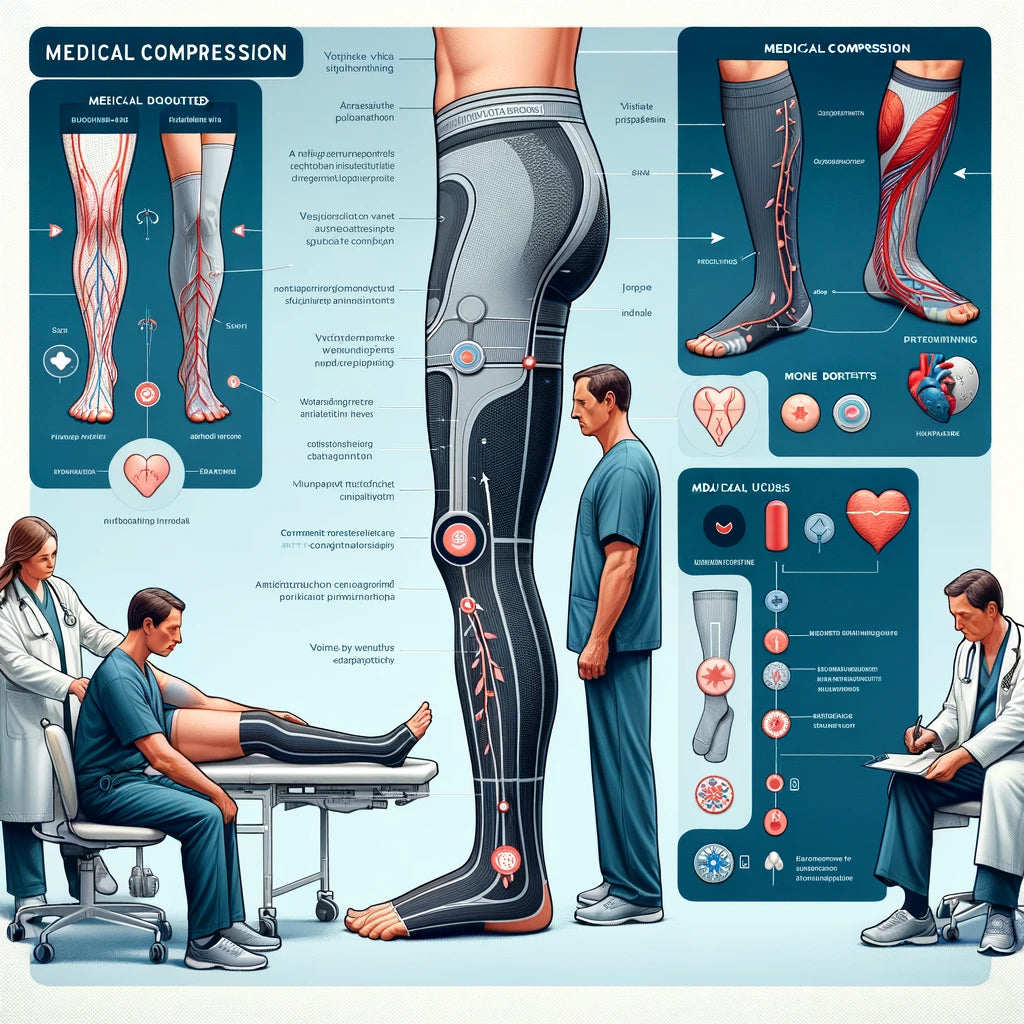Compression wear has gained popularity in recent years among athletes, fitness enthusiasts, and individuals seeking enhanced performance, comfort, and recovery. From compression socks to compression sleeves, these garments offer a range of benefits that extend beyond the realm of sports. In this comprehensive guide, we'll delve into the science behind compression wear, its benefits for various activities and conditions, and how to select the right compression garments for your needs.
Understanding Compression Wear: What Is It and How Does It Work? Compression wear is tight-fitting garments made from elastic materials that apply pressure to specific areas of the body. The pressure exerted by compression wear helps improve blood circulation, reduce muscle vibration, and provide support to muscles and joints during physical activity. Compression garments come in various forms, including socks, sleeves, shorts, shirts, and leggings, each designed to target different areas of the body.
The Benefits of Compression Wear: a. Enhanced Circulation: Compression wear helps improve blood flow and oxygen delivery to muscles, reducing fatigue and enhancing performance during exercise. b. Muscle Support: The compression provided by these garments helps stabilize muscles and joints, reducing the risk of injuries such as strains and sprains. c. Faster Recovery: Compression wear accelerates the removal of metabolic waste products such as lactic acid from muscles, reducing soreness and promoting faster recovery after exercise. d. Reduced Swelling: Compression garments can help alleviate swelling and edema, making them beneficial for individuals with conditions such as lymphedema and venous insufficiency. e. Improved Proprioception: Compression wear enhances proprioception, or the body's awareness of its position in space, leading to better balance and coordination during physical activities.

Applications of Compression Wear: a. Athletic Performance: Athletes across various sports use compression wear to optimize performance, reduce muscle fatigue, and minimize the risk of injuries. b. Medical Uses: Compression garments are prescribed for medical conditions such as deep vein thrombosis (DVT), varicose veins, and lymphedema to improve circulation and manage symptoms. c. Travel: Compression socks are recommended for long flights to prevent deep vein thrombosis (DVT) and reduce swelling in the legs and feet. d. Pregnancy: Maternity compression wear provides support to the abdomen, back, and legs, reducing discomfort and promoting circulation during pregnancy. e. Workplace: Individuals who stand or sit for long periods at work can benefit from compression socks or stockings to prevent fatigue, swelling, and discomfort.
Selecting the Right Compression Wear: a. Compression Level: Compression garments come in different compression levels, ranging from mild to high compression. The appropriate level of compression depends on the intended use and individual needs. b. Fit and Size: Proper fit is crucial for the effectiveness of compression wear. Measure your body accurately and refer to sizing charts provided by manufacturers to ensure a snug yet comfortable fit. c. Material and Design: Choose compression garments made from breathable, moisture-wicking fabrics that provide comfort and durability. Look for seamless construction and flatlock seams to minimize chafing and irritation. d. Purpose and Activity: Consider the intended use of the compression wear and select garments designed specifically for that activity or condition. For example, compression socks for running may have additional padding and support in key areas compared to everyday compression socks.
Caring for Compression Wear: To prolong the life and effectiveness of compression garments, follow these care tips:
- Wash compression wear after each use with mild detergent and cold water.
- Avoid using fabric softeners and bleach, as they can degrade the elasticity of the fabric.
- Air dry compression garments away from direct heat and sunlight to prevent shrinking and damage.
Conclusion: Compression wear offers a range of benefits for athletes, individuals with medical conditions, travelers, and those seeking enhanced comfort and support in their daily lives. By understanding the science behind compression wear, its applications, and how to select the right garments, you can harness its full potential to optimize performance, promote recovery, and improve overall well-being. Whether you're hitting the gym, traveling the world, or managing a medical condition, compression wear can be a valuable addition to your wardrobe and lifestyle.

